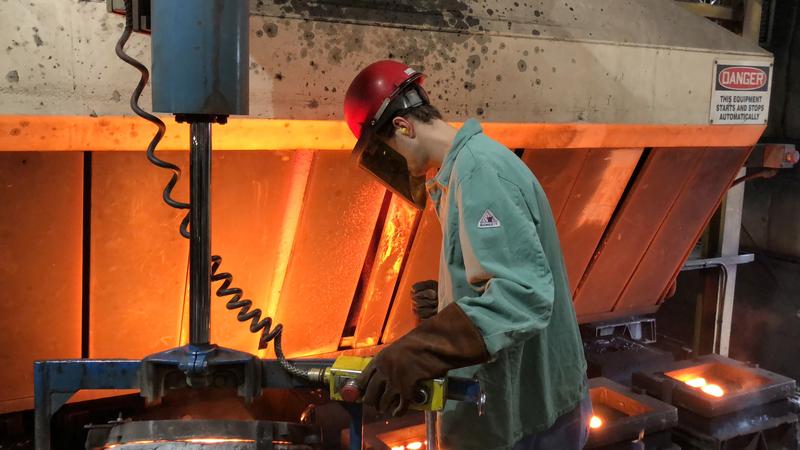WASHINGTON (Reuters) – U.S. manufacturing activity surged to its highest level in nearly 14 years in early January, but bottlenecks in the supply chain caused by the COVID-19 pandemic are driving up prices and signaling a rise in inflation in the months ahead.
Other data on Friday showed an unexpected increase in sales of previously owned homes in December. Manufacturing and the housing market are helping to anchor the economy, which is being battered by a wave of coronavirus infections. But the pandemic is causing labor shortages at construction sites and factories, which could erode some of the strength in the manufacturing and housing sectors.
Data firm IHS Markit said its flash U.S. manufacturing PMI accelerated to a reading of 59.1 in the first half of this month, the highest since May 2007, from 57.1 in December.
Economists had forecast the index would slip to 56.5 in early January. A reading above 50 indicates growth in manufacturing, which accounts for 11.9% of the U.S. economy. Manufacturing is being supported by businesses rebuilding inventories and a shift in demand towards goods from services because of the pandemic.
The IHS Markit survey’s measure of new orders received by factories raced to its highest level since September 2014. The surge in demand reflected both existing and new customers, “with some clients reportedly committing to orders previously placed on hold.” That led to manufacturers hiring more workers early this month. The survey’s factory employment index increased to 54.8 from 52.2 in December.
But the pandemic is gumming up the supply chain, resulting in manufacturers paying more for materials, and they are passing on the higher production costs to consumers. The survey’s gauge of prices received by factories vaulted to its highest level since July 2008.
This mirrored other manufacturing surveys, suggesting inflation could pick up and remain elevated beyond the anticipated boost from the drop of weak readings in March and April from the calculation.
The strength in manufacturing helped to lift business activity. The survey’s flash composite PMI Output Index, which tracks the manufacturing and services sectors, rose to a reading of 58.0 early this month from 55.3 in December. While its flash services sector PMI increased to 57.5 from 54.8 in December, the pace of new business growth softened at the start of 2021.
The services sector, which accounts for more than two-thirds of U.S. economic activity, has borne the brunt of the pandemic, with severe disruptions to restaurants, bars and other businesses that attract crowds. COVID-19 has infected more than 24 million people in the United States, with the death toll exceeding 400,000.
The survey’s measure of services industry employment fell to a six-month low in early January.
U.S. stocks were trading lower while the dollar was steady against a basket of currencies. U.S. Treasury prices rose.
RECORD LOW INVENTORY
In a separate report on Friday, the National Association of Realtors said existing home sales increased 0.7% to a seasonally adjusted annual rate of 6.76 million units last month. Economists had forecast sales would decrease 2.0% to a rate of 6.55 million units in December.
Home resales, which account for the bulk of U.S. home sales, surged 22.2% on a year-on-year basis. They totaled 5.64 million in 2020, the most since 2006. Sales in December increased in the Northeast and South. They were unchanged in the Midwest and declined in the West.
Cheaper mortgages and an exodus from city centers to suburbs and other low-density areas as companies allow employees to work from home and schools shift to online classes because of COVID-19 are underpinning demand for housing. About 23.7% of the labor force is working from home. The pandemic has disproportionately impacted lower-wage earners.
But housing supply remains a challenge. While the government reported on Thursday that homebuilding and building permits surged in December to levels last seen in 2006, builders are complaining about higher lumber prices and persistent shortages of labor and land, and they said “delayed delivery times had put upward pressure on home prices.”
In December, there were a record low 1.07 million previously owned homes on the market, down 16.4% from November and 23% from a year ago, leading to an acceleration in house price inflation. The median existing house price jumped 12.9% from a year ago to $309,800 in December. House prices increased 9% in 2020.
At December’s sales pace, it would take a record low 1.9 months to exhaust the current inventory, down from 2.3 months in November and 3.0 months a year ago. A six-to-seven-month supply is viewed as a healthy balance between supply and demand.
Source: Read Full Article
